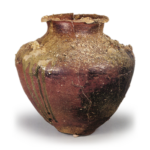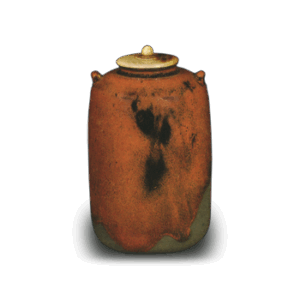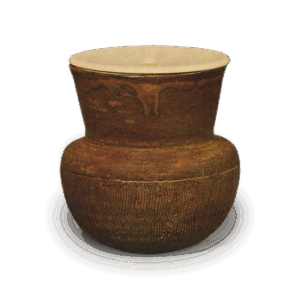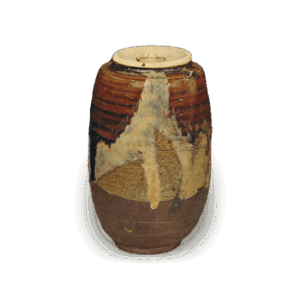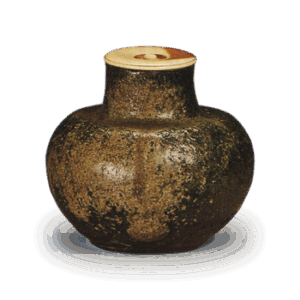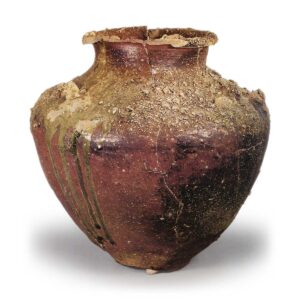
Excavated from Morikoshi Kiln, Tokoname City, Aichi Prefecture
13th century
Height 39.7cm, Bore 19.2-21.0cm, Body 41.0cm, Bottom 11.5-12.6cm
Tokoname City Ceramic Research Institute
Among Tokoname pots, there are a large number of jars with three or four ears on the shoulder. In the Heian period (794-1185), the technique of the previous generation was inherited and used vertical ears, but in the Kamakura period (1192-1333), Seto-style horizontal ears were used, and three-ear jars were by far the most common type of jar. This jar has an unusual mouth design in that the edge of the mouth rim is bent outward in a rounded curve, and the shoulders protrude strongly, but the line that transitions to the body is rounded, and the body shape is bulging toward the small bottom. Based on the shape, it must have been made in the middle of the Kamakura period. The clay is rather coarse and rich in feldspar, which is abundant in the central part of the peninsula, and it is well tempered, with feldspar pits visible on the entire surface of the brownish-brown vessel. The green natural glaze running down from the shoulder to part of the body, together with the vertical cracks caused by the intense fire, make this large jar very powerful.

